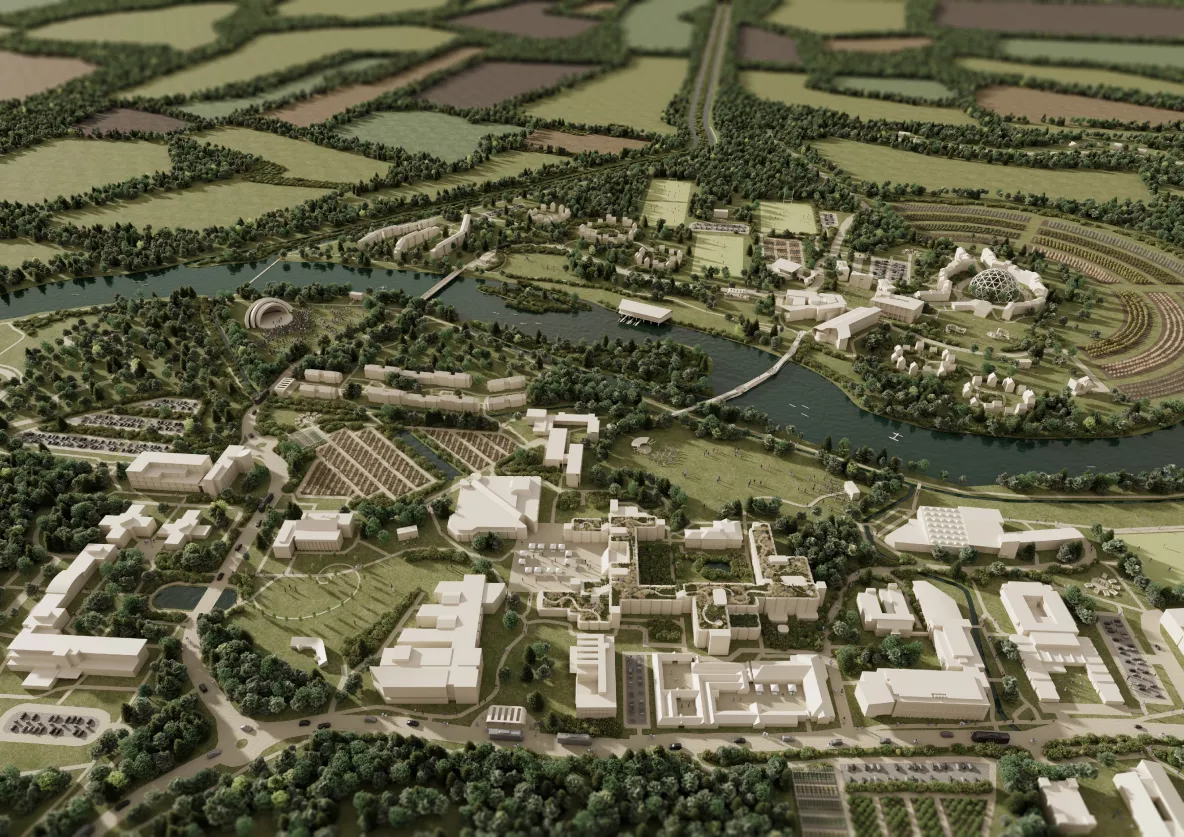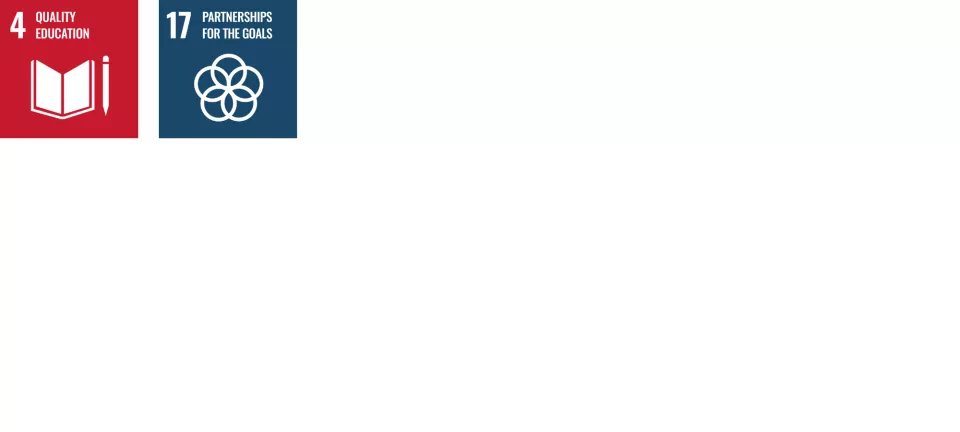
University of Limerick has signalled its intent to become a ‘truly sustainable university’ as it marks its fiftieth year.
UL President Professor Kerstin Mey made the announcement at the annual President’s Dinner in Adare Manor – an event that has not taken place for three years.
Professor Mey said a UL Sustainability Framework 2030 had been approved by the Executive Committee and Governing Authority as part of a groundbreaking new initiative to drive the vision of the institution’s future.
The President’s Dinner also marked the beginning of UL 50, a year of events to mark the anniversary of the establishment of the university in 1972 as the National Institute of Higher Education.
“The UL Sustainability Framework 2030 advocates a mission-based approach which aligns with much of the work currently been undertaken within the EU and globally,” explained Professor Mey.
“The Framework will act as a bedrock for our decisions and actions to shape the future of higher education, research and the organisation itself.
“It connects with so much of what has already been pioneered by UL but also looks to build new capabilities, and to enable increased experimentation on campus all aimed at becoming a sustainable university, through and through.
“I am confident it will unite and drive collaboration between learners, academics, researchers, professionals, with industry and businesses, with the communities we serve and with government and public bodies.
“We cannot do this alone, and as we take our first steps towards a truly sustainable university, one that acts as a role model for sustainability in the region and beyond, we know that we will need the support and guidance of many actors, cross-sectoral groups and individuals to succeed,” Professor Mey added.
UL was the first Irish institution to appoint a Futures and Foresight Lead to work on Sustainable and Regenerative Futures.
Following this, a Sustainability Working Group comprised of over 70 members from all areas of the University along with UL students, completed an eight month long challenge to collectively shape a sustainability framework that will guide and inspire action at the for the next decade.
The highly participatory, design-led process has created a sustainability roadmap to guide the University.
Futures and Foresight Lead Andrea Deverell explained the work that is taking place to reimagine UL as a ‘sustainable university’.
“Preparing for the UL 50 celebrations gave us an opportunity to stand at the crossroads between UL’s past achievements and what we could be and do in the next 10 years with a new president at the helm and being fully cognisant of the urgent need to lead in a local, national and global paradigm shift to a collective culture of sustainability in line with the UN Sustainable Development Goals,” explained Andrea.
“We realised that for us to be successful and really bring about the kind of vision we were aiming for, we need everyone to get involved.
“We discussed the importance of sustainable governance and the role of procurement in ensuring that we source products and services that are sustainable. We discussed local produce, and producers and how to reduce air miles.
“We discussed the UL campus as a fundamental starting point: Our collective space where sustainability should be seen, felt and experienced. We considered our approaches to education and our curriculum, discussing how we could engage more meaningfully with sustainable development.
“We talked about the central role of research and how it connects with sustainability and how we can actively encourage a deeper campus wide focus and a series of North Star projects to drive future activity.
“A sustainable world will not happen without determined effort – our actions today shape the future we manifest. To become a Sustainable University, we must start by acknowledging that true sustainability will require permanent adaptive responsiveness to on-going change.
“We identified four high-level challenges associated with our four working groups: governance, the economy, society and the planet.
“We identified a set of missions inspired by our four grand challenges. They are bold and ambitious missions that will serve as our starting point for guiding action. Importantly, the missions we have shaped are still malleable; they will require campus wide engagement, ownership and leadership. Each of our UL missions are underpinned by a set of declarations. These declarations are where we hope to be in 2030.
“Over the coming months we will work with the campus community to further develop each of our missions. Some will be prioritised to start immediately, others will be launched over the coming years.
“Some are very ambitious while others build on work that is already going on in UL. We will learn as we go, shaping and reshaping our missions. Inevitably, some will fail and some will succeed.
“As a first step, we have dared to imagine what UL could be like in 2030. What would it feel like to work and learn at UL? How would we experience our campus, walking through large re-wilded spaces, welcoming nature into our buildings, protecting natural habitats, celebrating our community, producing energy, with a radically reduced carbon footprint, ensuring equality and diversity in the workplace and universal access to education, working in partnership with local communities and companies towards a world that we would be happy for our kids to inhabit.”
The UL Sustainability Framework 2030 will be officially launched in September.
A full schedule of events has been programmed to mark UL’s fifty years: seminars, conferences, concerts, exhibitions, publications, lectures and cultural and sporting projects. For more details, see www.ul.ie/50.
Key facts about UL 50:
- More than 117,000 students have graduated from University of Limerick in the past 50 years
- More than 2,200 have obtained PhDs
- The Glucksman Library is a repository of a valuable collection of manuscripts in 2,000 archive boxes and has 40,000 printed items. The oldest item in the library is a piece of papyrus from 400 AD
- Approximately 10,000 people pass through the doors of the UL Glucksman library every day during term time on the UL campus
- The first five programmes which commenced 50 years ago were: Applied Science; Business; Electronic Technologies; European Studies; and Secretarial Science
- UL currently offers 68 undergraduate programmes as well as 124 taught postgraduate programmes
- UL pioneered the concept of Cooperative Education in Ireland by placing students for a semester with employers in Ireland and across the world
- Today UL’s Cooperative Education programme is one of the largest undergraduate placement programmes in Europe, with placements for over 2,500 students annually
- UL’s industry engagement programme involves over 850 employer site visits annually and more than 700 employer partners visits the UL campus every year
- UL graduates enjoy a particular employability strength, with over 92 per cent of graduates employed or engaged in further study
- In 1972 the campus consisted of 73.8 acres (29.86 hectares). Today the campus expands across 367 acres (149 hectares) in counties Limerick and Clare and in the city, with the river Shannon running along it. NIHE opened its doors in 1972 with a campus consisting of just two buildings – Plassey House and its stables – there are now 50 buildings on the UL campus, with 262,208sqm of building stock
- There were 10 classrooms on campus in 1972 – today there are 144 lecture theatres, seminar rooms and classrooms of varying size and capacity and 413 laboratories
- There are 2.243km (1.4 miles) of riverbank running through the UL campus and more than 4,000 trees
- Over 5,800 people have been employed on a full-time capacity at UL in its fifty-year history, making it one of the Limerick region’s biggest employers
- Over the last 50 years in excess of over 20,000 international students from 136 countries have studied at the University
- UL is ranked 21 out of 956 universities in the most recent UI Green Metric rankings.
- UL is Green Campus accredited under Energy, Waste, Biodiversity, Travel and Transport and Green ICT
- UL succeeded in achieving a 43.4 per cent reduction in its total primary energy requirement by 2020 (exceeding the government-mandated target of 33 per cent by 2020)
- In March 2022 UL approved its first Mission-based Sustainability Framework 2030, the aim of which is to integrate the UN Sustainability Development Goals into ‘the heart of everything UL strives to become’
